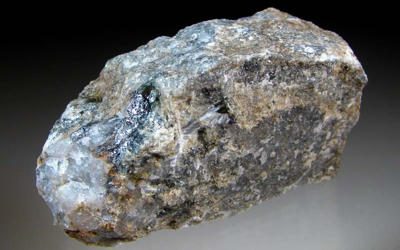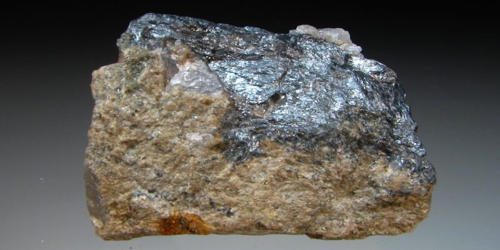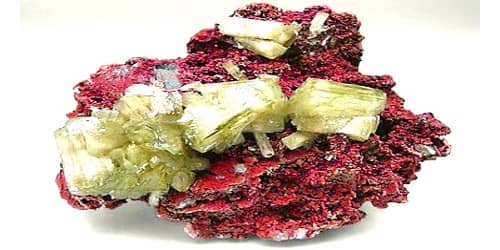Meneghinite is a rare mineral that generally forms interesting acicular crystals. It is a sulfosalt mineral with the chemical formula CuPb13 Sb7S24. It is a mineral consisting of dark lead-gray lead antimony sulfide. It is a monoclinic sulphide and antimonide of lead and copper, CuPb₁₃ Sb₇ S₂₄, that is a rare ore mineral for the latter elements usually occurring as greyish-black prisms and in fibrous masses.
Discovered in the Italian Province of Lucca in 1852, it is named after Giuseppe Meneghini (1811–1889) of the University of Pisa, who first observed the species. The Bottino Mine in Lucca is the type locality.
General Information
- Category: Sulfosalt mineral
- Formula: (repeating unit) CuPb13 Sb7S24
- Crystal system: Orthorhombic
- Crystal class: Dipyramidal (mmm)
- Color: Blackish lead-grey

Properties
Meneghinite is one of several lead-antimony sulfides. The elements lead, antimony and sulfur have the capability of forming many different minerals. They have some very similar properties such as a gray color, high density, low hardness, metallic luster, dark gray to black streaks, and a similar environment of formation. In the orthorhombic crystal system, meneghinite has a Mohs hardness of 2 1⁄2, one perfect cleavage, and a conchoidal fracture. It is a blackish lead-grey in color and gives a black shining streak. Its luster is metallic.
- Crystal habit: Prismatic to acicular, massive
- Cleavage: {010} perfect
- Fracture: Conchoidal
- Tenacity: Brittle
- Mohs scale hardness: 2 1⁄2
- Luster: Metallic
- Streak: Black shining
- Diaphaneity: Opaque
- Specific gravity: 6.36
- Pleochroism: Weak
Occurrence: Uncommon, but widespread in hydrothermal veins, also contact metasomatic, volcanogenic sulfide, Cu–Mo porphyry, and rarely, Kuroko deposits.
Notable Occurrences include the type locality of Bottino Mine, Serravezza, Alpe Apuane, Toscana, Italy as well as Chamonix Valley, France; Turkey; Kalkar Quarry, Santa Cruz County, California, USA and Marble Lake, Frontenac County, Ontario, Canada.
Most form from hydrothermal fluids that crystallize at lower temperatures than other sulfides.
Association: Galena, chalcopyrite, sphalerite, bournonite, cubanite, pyrite, pyrrhotite, boulangerite, jamesonite, franckeite, tetrahedrite, gudmundite.
Information Source:
















